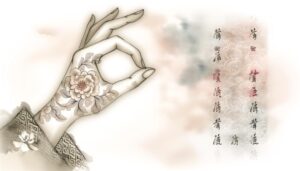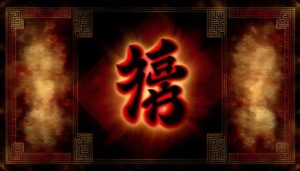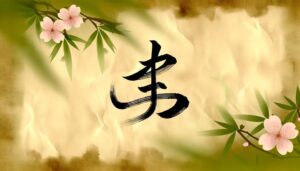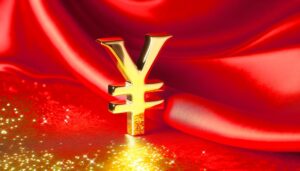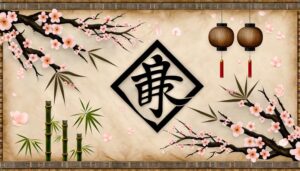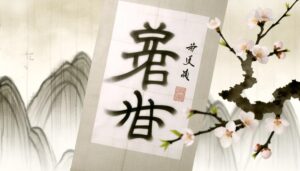What Does the Chinese Phoenix Bird Symbol Represent?
The Chinese symbol for the phoenix, known as Fenghuang (凤皇), is deeply ingrained in Chinese cosmology and tradition. It represents high moral standards, integrity, and the harmonious balance of yin and yang.
Frequently featured in classical poetry and elaborate visual art, it symbolizes auspicious events, renewal, and celestial favor. The Fenghuang's association with the five Chinese elements and its composite form embodying multiple virtues underscore its rich metaphysical significance.
In modern culture, it continues to symbolize rebirth, prosperity, and national resilience. Exploring further reveals how the Fenghuang persists as a dynamic cultural motif.
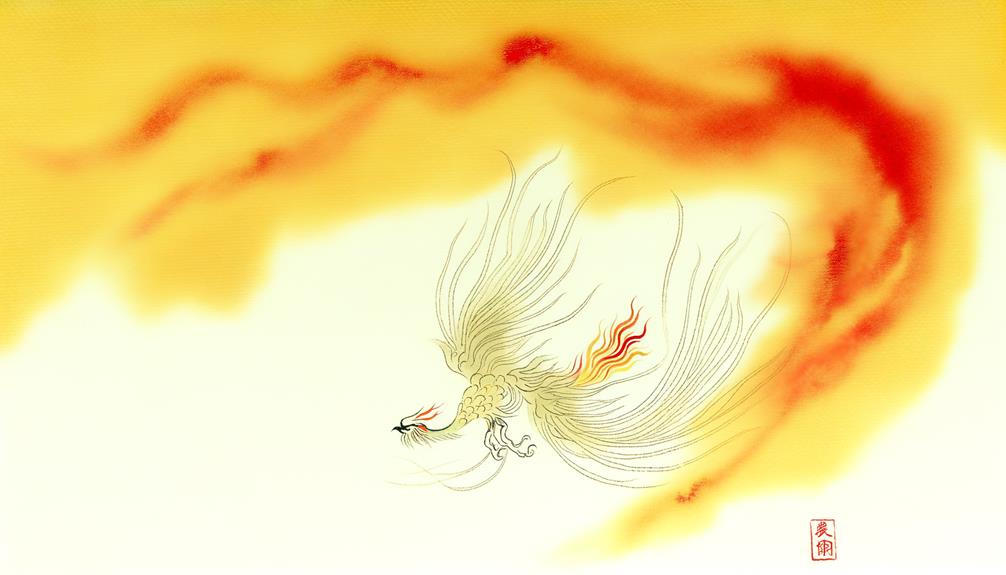
Key Takeaways
- The Chinese phoenix, known as Fenghuang, is a composite symbol of various animals representing virtues and cosmic balance.
- Fenghuang is deeply embedded in Chinese metaphysical thought and symbolizes high moral standards, integrity, and harmony.
- In art, Fenghuang is depicted with elaborate designs, vibrant colors, and floral motifs like peonies, emphasizing its regal and auspicious nature.
- Fenghuang plays a significant allegorical role in Chinese literature, symbolizing virtue, grace, renewal, and royal legitimacy.
- In modern China, Fenghuang symbolizes rebirth, prosperity, and resilience, frequently appearing in weddings and national rejuvenation narratives.
Mythological Origins
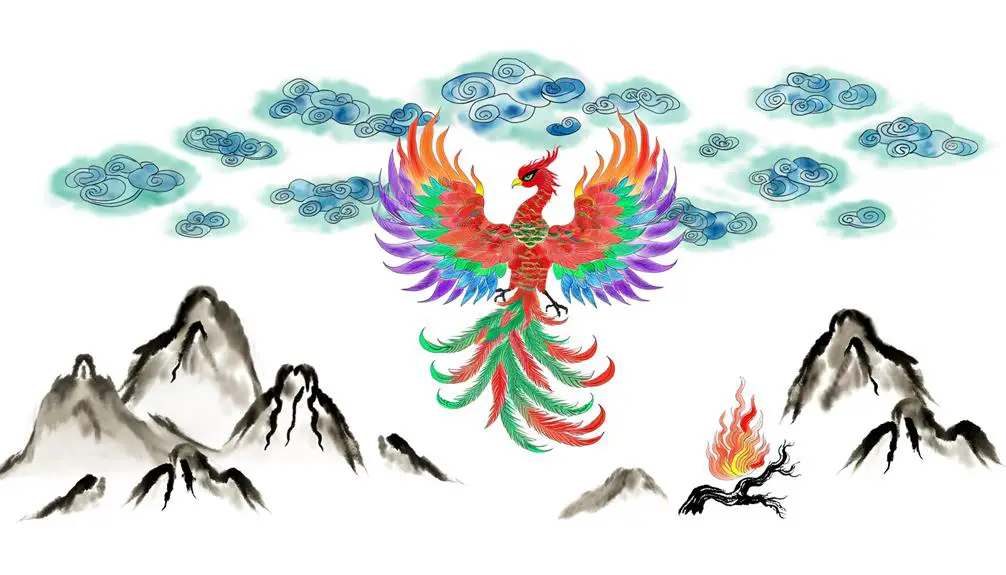
The mythological origins of the Chinese phoenix, also known as the Fenghuang, are deeply rooted in ancient Chinese cosmology and symbolism, representing the harmonious union of yin and yang.
This revered creature appears in texts dating back to the Shang Dynasty (1600-1046 BCE), where it was often depicted alongside the dragon. The Fenghuang is described as a composite of various animals: the head of a pheasant, the body of a mandarin duck, the tail of a peacock, and the legs of a crane. These elements symbolize different virtues and attributes.
Additionally, its association with the five primary colors reflects the five Chinese elements (wood, fire, earth, metal, and water), further embedding the Fenghuang into the fabric of Chinese metaphysical thought.
Symbolic Meanings
Building upon its mythological origins, the Fenghuang embodies a plethora of symbolic meanings that permeate various aspects of Chinese culture, ranging from virtue and grace to prosperity and peace.
This mythical bird is often seen as an emblem of high moral standards, representing the epitome of integrity and benevolence. In traditional Chinese philosophy, the Fenghuang symbolizes the harmonious balance of yin and yang, embodying both feminine and masculine qualities.
It is a harbinger of auspicious events, often depicted in contexts that signify good fortune and longevity. The Fenghuang's presence in cultural artifacts and literature underscores its role as a celestial messenger, bridging the mortal and divine, and enhancing communal aspirations for harmony and well-being.
Artistic Depictions
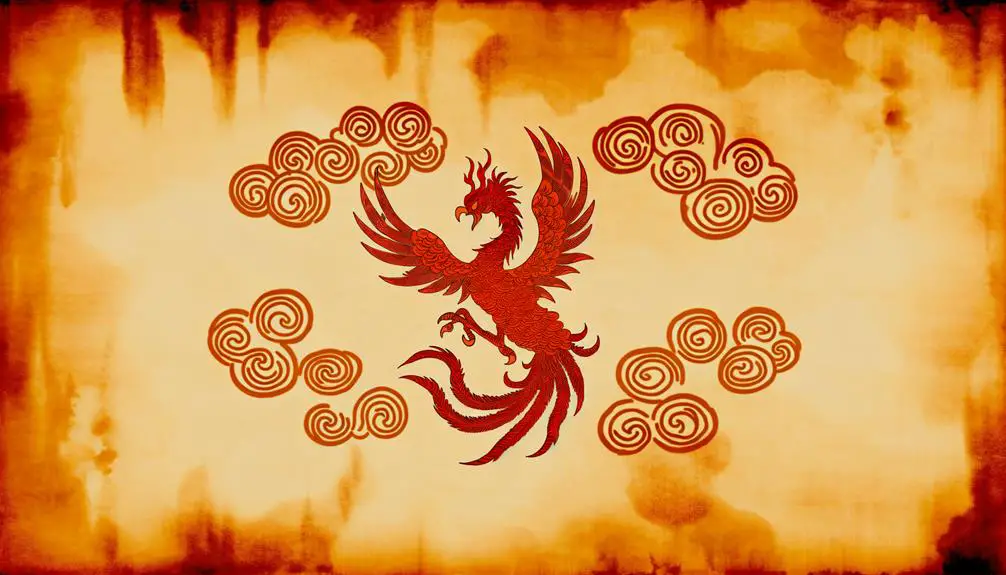
Depicting the Fenghuang in Chinese art has historically involved intricate and elaborate designs that emphasize its regal and ethereal nature. Artists often use a vibrant palette of reds, golds, and blues to highlight the bird's majestic plumage, symbolizing virtue and grace.
Traditional depictions frequently present the Fenghuang amidst floral motifs, particularly peonies, which complement its association with beauty and prosperity. Sculptural representations, commonly found in architectural elements, showcase the bird in dynamic poses, embodying both strength and elegance.
Moreover, the Fenghuang is frequently rendered in symmetrical compositions, reflecting the harmony it represents in Chinese cosmology. These artistic conventions not only celebrate the aesthetic qualities of the Fenghuang but also reinforce its profound cultural and symbolic significance.
Role in Literature
The Phoenix bird, or Fenghuang, holds a prominent place in Chinese literature, where it is often imbued with rich mythological significance.
As a symbol of virtue, grace, and renewal, the Phoenix frequently appears in classical poetry, embodying ideals of harmony and prosperity.
This literary usage underscores the bird's allegorical role in conveying complex cultural values and philosophical concepts.
Mythological Significance
In Chinese literature, the phoenix bird, known as Fenghuang, symbolizes not only rebirth and immortality but also serves as an emblem of virtues such as grace, loyalty, and high moral standards. Rooted in ancient mythologies, Fenghuang is often depicted as a harmonious union of male and female elements, embodying the duality of yin and yang.
This bird is frequently associated with the empress, paralleling the dragon's association with the emperor, strengthening its role in narratives of royal legitimacy and cosmic balance. The phoenix's presence in classical texts highlights its function as a moral compass, guiding characters and readers toward ethical and virtuous behavior, thereby enriching the cultural tapestry with layers of allegorical significance.
Symbolism in Poetry
Throughout Chinese poetry, the phoenix, or Fenghuang, emerges as a powerful symbol of transcendence and renewal, enriching the literary landscape with its profound allegorical significance. This mythical bird is often invoked to convey themes of rebirth, harmony, and the eternal cycle of life. The phoenix's symbolic presence in poetry serves multiple functions:
- Moral Exemplars: Representing virtue and grace, the phoenix is often used to illustrate the ideal qualities of rulers and sages.
- Natural Harmony: The bird's association with the sun and the natural order underscores the interconnectedness of all elements.
- Romantic Idealism: In love poetry, the phoenix can symbolize the unity and eternal bond between lovers.
These layers of symbolism elevate the phoenix to a central motif in Chinese literary tradition.
Fenghuang in Philosophy
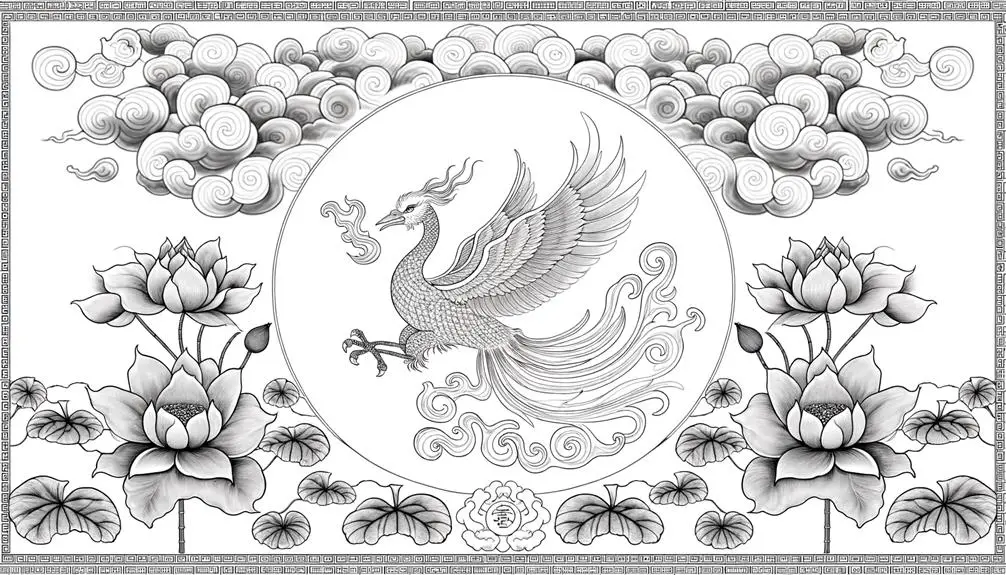
In Chinese philosophy, the Fenghuang embodies profound symbolism, representing not only virtue and grace but also the balance of cosmic forces.
Integral to cultural narratives, it epitomizes the harmonious interplay of yin and yang, where the Fenghuang often complements the dragon (long) in signifying unity and duality.
This philosophical framework underscores the bird's significance in embodying both aesthetic and metaphysical ideals within Chinese thought.
Symbolism in Chinese Culture
Fenghuang, often referred to as the Chinese phoenix, embodies a rich tapestry of philosophical symbolism, representing virtues such as balance, harmony, and the cyclical nature of life within Chinese culture. This mythical bird is not merely a decorative motif but serves as a profound allegory in various aspects of Chinese thought.
Its symbolism is evident in:
- Moral integrity: Fenghuang is often associated with righteousness and benevolence.
- Harmony between genders: It symbolizes the union and balance of male and female forces.
- Imperial authority: Historically, it represents the empress, contrasting the dragon's association with the emperor.
Through these representations, Fenghuang underscores the significance of ethical conduct, gender harmony, and sovereign legitimacy, providing a multifaceted lens into Chinese cultural and philosophical paradigms.
Yin-Yang Representation
The Fenghuang, often understood through the lens of Yin-Yang philosophy, epitomizes the intricate balance of opposing yet complementary forces that pervade Chinese cosmological thought.
This mythical bird symbolizes the harmonious interaction between Yin, representing qualities like darkness and passivity, and Yang, signifying brightness and activity.
In traditional Chinese philosophy, the Fenghuang's existence underscores the necessity of duality, where neither force can exist without the other.
Consequently, the Fenghuang serves as a powerful metaphor for unity and equilibrium, reflecting a broader understanding of balance in nature, society, and the individual.
Influence on Imperial China
How did the symbol of the phoenix bird come to represent not only the pinnacle of virtue but also the enduring authority of the Chinese imperial throne?
The phoenix, or Fenghuang, has deep-rooted connections with the imperial ethos, embodying ideals of harmony and order. Its symbolism was meticulously woven into:
- Imperial regalia: Emperors adorned their robes with phoenix motifs, signifying their divine right to rule.
- Palatial architecture: Phoenix imagery was prevalent in the design and decor of imperial palaces, underscoring the sovereign's esteemed status.
- Dynastic rituals: The bird featured prominently in ceremonies, reinforcing the emperor's moral and cosmological alignment.
In these contexts, the phoenix was more than a mythical creature; it was a powerful emblem of the emperor's virtuous and unassailable authority.
Modern Cultural Impact
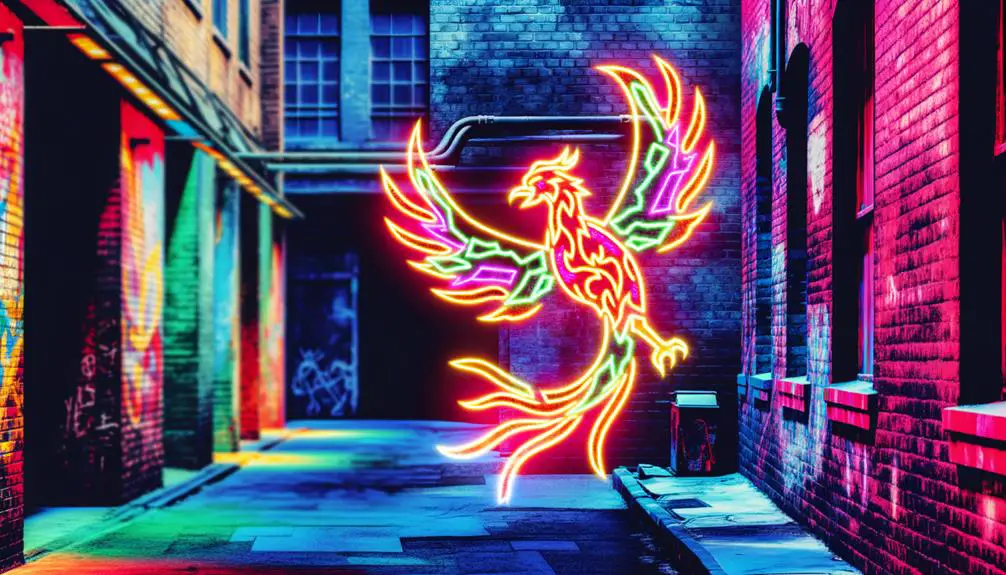
While the phoenix represented the peak of imperial virtue in ancient China, its symbolic resonance persists in contemporary culture, manifesting through various artistic, social, and political mediums.
In modern China, the phoenix is frequently portrayed in visual arts, literature, and fashion, symbolizing rebirth, prosperity, and elevated status.
Socially, it often appears in wedding ceremonies, representing harmony and auspicious beginnings.
Politically, the phoenix is invoked to symbolize national rejuvenation and resilience, aligning with China's narrative of modernization and global influence.
This enduring emblem, deeply rooted in historical context, continues to be a powerful cultural motif, reflecting both continuity and adaptation within a rapidly evolving society.
The phoenix remains a crucial link between China's illustrious past and its dynamic present.
Conclusion
Coincidentally, the phoenix, or Fenghuang, mirrors the trajectory of Chinese civilization itself—rising from mythological origins to becoming a multifaceted symbol in art, literature, philosophy, and imperial iconography.
This emblem of rebirth and harmony has endured, adapting to modern cultural contexts while retaining its core essence. The phoenix's enduring presence underscores its profound influence, reflecting both historical continuity and the dynamic evolution of Chinese cultural identity.
Such a symbol encapsulates the resilience and transformative capacity inherent in Chinese heritage.

